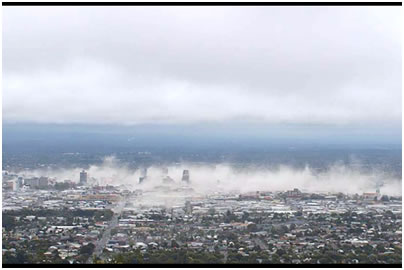Topic 3: The disaster cycle
Overview
Christchurch in New Zealand, earthquake 2010 Source: http://www.foun.org.au/files/164701_164800/164778/739267-new-zealand-earthquake.jpg |
In this Topic we examine the Disaster Risk Management Cycle (DRMC) and Disaster Risk Reduction (DRR), which is one way to present what is commonly known as the ‘disaster cycle’. If you have studied EMG100 you will already be familiar with the Prevention, Preparedness, Response, Recovery (PPRR) model. The basic elements of the DRMC, DRR and the PPRR models are essentially the same, however the presentation of the Disaster Risk Reduction model provides a handy springboard for an overview and recap of the applications of emergency management. You will see that the overall challenge of a situation is increased due to the size or intensity of a disaster or complex emergency, whether this occurs in a developing, rather than an advanced economy, and whether poor governance or conflict and violence prevails.
It is important to realise that despite the focus in this Study Guide on complex emergencies, there are also disasters which require an international humanitarian relief effort, but do not involve human conflicts such as war. An example is the Japanese tsunami and earthquake of 2011, where the international humanitarian response of physical, social and economic aid has been welcomed by the Japanese people and government.
Learning outcomes
At the completion of this Topic students should be familiar with:
- the disaster cycle, involving preparation, response and recovery
- stakeholder groups in emergency response and recovery
- distinguishing between human-made and naturally occurring disasters
